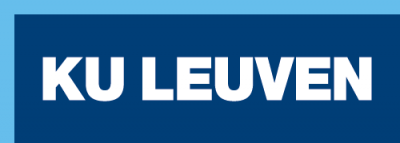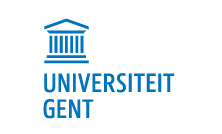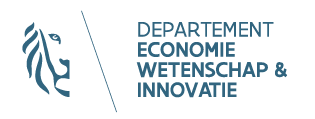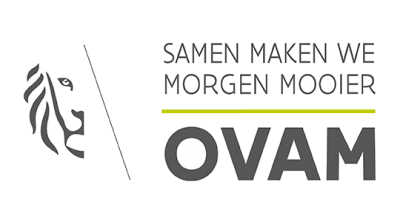13 - Reuse. The understudied circular economy strategy
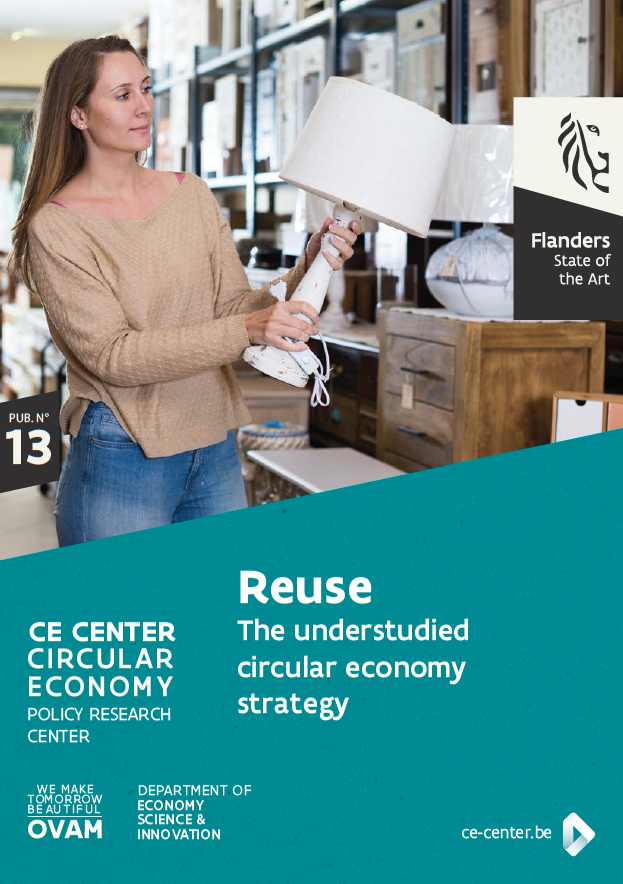 This report addresses blind spots in current research about the understudied circular phenomenon of reuse and the variety of formal (i.e. included in our economy through regulated economic units and protected workers) and informal (i.e. part of an informal economy in which transactions do not get registered) channels through which it may occur. It is part of the research line on employment and actor analysis for the circular economy of the Flemish Circular Economy Policy Research Centre.
This report addresses blind spots in current research about the understudied circular phenomenon of reuse and the variety of formal (i.e. included in our economy through regulated economic units and protected workers) and informal (i.e. part of an informal economy in which transactions do not get registered) channels through which it may occur. It is part of the research line on employment and actor analysis for the circular economy of the Flemish Circular Economy Policy Research Centre.
The most important questions addressed in this report are which amount of reuse is currently realised in Flanders, which environmental, social and economic impact reuse has, which barriers and opportunities for reuse exist now and in the future and which actors are involved in reuse in Flanders. Based on these insights, we provide policy recommendations to increase reuse in Flanders. This report is based on existing literature, and available data, interviews and communication with actors in the field, and a survey study that was conducted in the fall of 2019. Based on the results of the survey, we map reuse in Flanders and we develop a new indicator for measuring reuse. The most important findings of our study are presented below.
- Environmental impact and circularity of reuse. Reuse is mostly considered as circular, partly because a reused good can replace a new one, which saves raw materials. However, the reuse market might also induce some rebound income effects (i.e. consumers can buy more goods with the same budget) and substitution effects (i.e. additional goods are bought rather than second-hand goods that replace the acquirement of a new good). First, the income effect of reuse might have negative environmental impacts. People could have a willingness to acquire additional goods for the purpose of acquiring surplus goods. The reuse market – offering mostly low price and easy access of second-hand goods – can have negative environmental or social effects. It is therefore important to explicitly address this nuance by assessing the replacement rate (i.e. the extent to which the acquisition of reusable goods prevents the acquisition of new goods). Our study confirmed the acquisition of “surplus goods” in Flemish citizens and provided a calculation for a mean replacement rate of 28%. Importantly, reuse is also circular since it diverts goods from the waste stream, irrespective of the replacement rate. Yet, pricing effects affecting people’s willingness to buy new goods (e.g. taking into account the price of reselling reusable goods) also affect circularity of reuse. We did not gather data about this in our survey study.
- Mapping reuse channels. Reuse may occur through formal channels, which are comprised of legally registered enterprises within the Flemish reuse network and of other legally registered shops in second-hand retail. By this means, formal reuse channels add value to our economic system since any buying or selling exchange increases GDP. In addition to reuse channeled through formal channels, it is important to map informal channels, which refer to informal transactions between individuals, including donations. Precisely because of their informal character, it is hard to quantify those transactions. Hence, earlier research has left most of these informal channels out of their quantification efforts or have estimated these transactions using surveys about acquiring and discarding household goods.
- The Flemish reuse network versus other reuse channels. In this report, we make an inventory of all possible channels through which products can be reused. Using both qualitative and quantitative data, we provide an overview of the channels and provide detail on how they are currently being used and, for some channels, how they have been evolving throughout the years. For each reuse channel, we quantify the number of transactions of reused goods, the weight of the goods reused (kg/cap) and the number of goods that are reused. By doing this, we get a detailed image of the role that accredited distribution centres play within the array of reuse channels. We propose that our estimate of the amount of reuse could serve as a more comprehensive reuse indicator for Flanders, as the indicator that is currently used as a governmental target is solely based on data from one particular source, i.e. accredited distribution centres.
- Results of our survey study. Our study reveals that in 2019, the Flemish network of reuse centres accounted for 11% to 19% (depending on the category of goods) of total reuse. Based on the share percentage of the reuse network, we calculated the amount of reuse for the four main product streams per capita in Flanders:
- Furniture: 14.9 kg reuse/capita
- Electric appliances: 3.2 kg reuse/capita
- Textile: 7 kg reuse/capita
- Household goods, leisure, books, music and multimedia: 11.6 kg reuse/capita
Hence, based on our survey data, we calculate 33.3 kg/capita instead of the Flemish reuse indicator of 5.4 kg/capita currently calculated by the reuse network and used by OVAM. This calculation is even conservative since we did not capture a fifth ‘rest group’ of goods comprising all possible reusable goods. If we follow the assumption that the share percentage of this category compared to the total reuse is similar for all channels compared to the reuse network (i.e. this category of goods comprises 1.3% of the total reuse), we can, for the reuse of household goods, estimate an overall true reuse indicator based on this extrapolated data of 33.8 kg/capita in 2019. - Future estimations of reuse. We recommend to use our more comprehensive indicator of reuse when estimating the total reuse in Flanders. When doing this – i.e. taking into account the kg from several other reuse channels above the reuse network – this indicator could be used for more accurate reuse estimations based on insights from quantitative citizen survey data. These might be used in a broader scope than the one that is currently tackled by the data provided for the reuse network specifically, i.e. broader than monitoring the reuse through the accredited reuse network. First, these more comprehensive estimations might be a better candidate for between-country comparisons of reuse, since many countries do not have a well-established reuse network neither do they accurately collect data in the accredited reuse centres they have established. Not surprisingly, scarce studies in other countries to date capture reuse based on other channels (e.g. car boot sales). Second, the understanding of the division of reuse of the main household good categories between the main reuse channels might provide a basis for comparison between the reuse channels. This would enable estimates based on the hypothesized growth or decline of specific reuse channels (e.g. the hypothesized growth of online reuse due to the current COVID situation).
- New reuse indicator not based on weight of reuse. Another option is to add indicators based on something else than weight. In particular, since product lifetime seems to lie at the core of circular reuse, some parts of a reuse indicator may want to focus on the following pillars important for circular reuse: the right to repair, extended producer responsibility, preparation for reuse and a reuse fee. Factors related to these aspects might improve the measurement of circular reuse. In particular, the quality of inflow seems to play a major role in the potential for reuse in terms of product lifetime. It has become clear that lowered quality of e.g. furniture and textile are important barriers for reuse. We recommend that indicators for reuse based on these four pillars all related with lifetime of goods (i.e. right to repair, EPR, preparation for reuse, reuse fee) should be further explored.
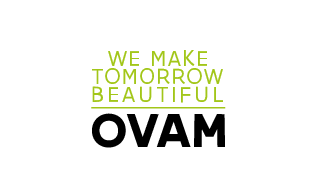
.png)
